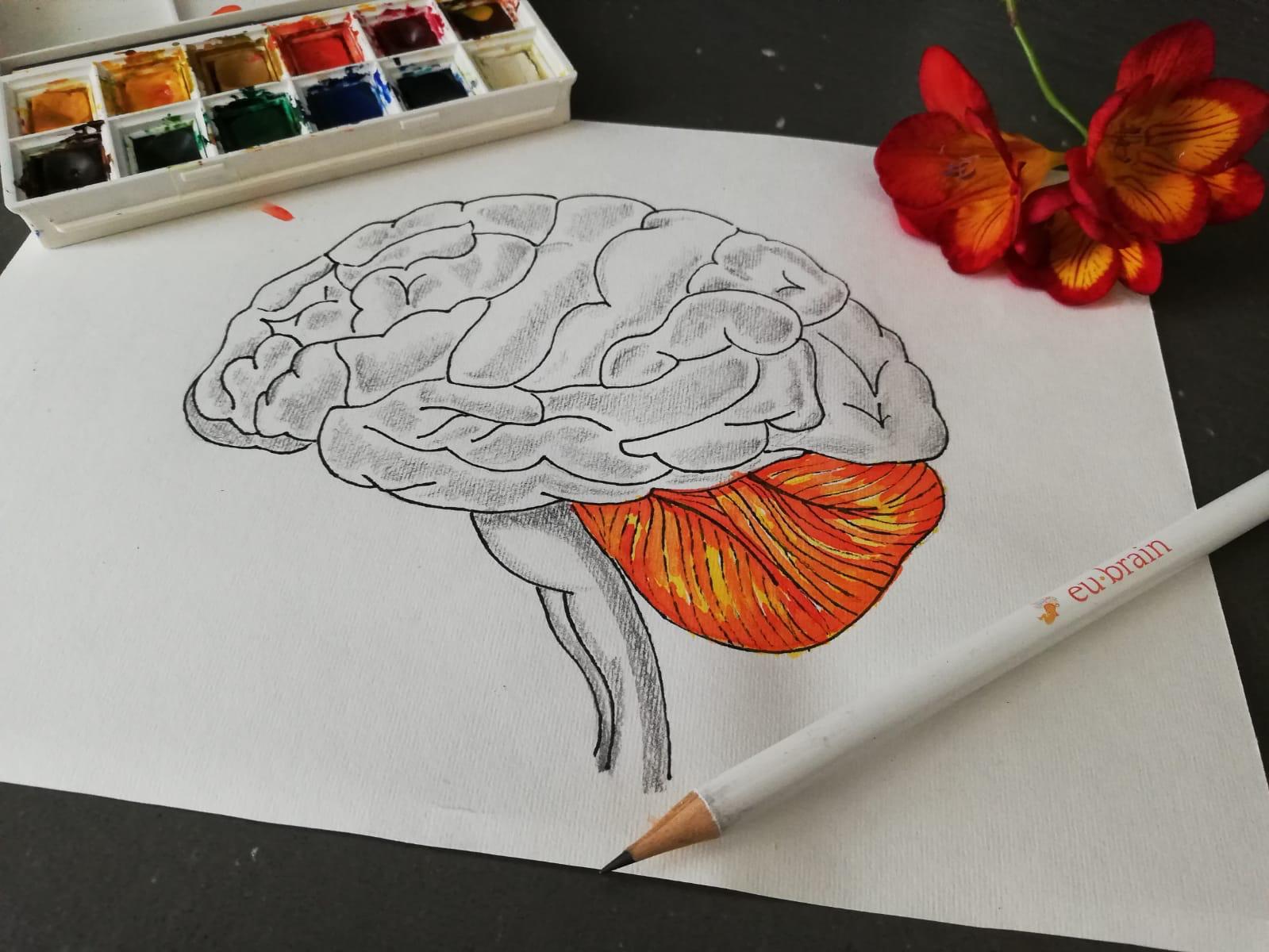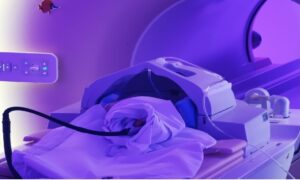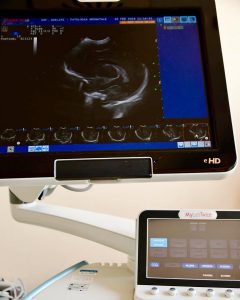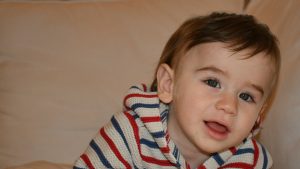The cerebellum, as we would say attending an anatomy lesson, is an “unequal median organ contained in the posterior cranial ditch which is separated from the rest of the cerebral lobes by a folding of the dura mater – called the “tentorium cerebellum”- which forms the roof of the posterior cranial ditch. Speaking in simple words, the cerebellum is an organ contained in the back part of the skull, in a central position, and it is separated from the rest of the brain by a pellicle, which is called “tentorium cerebellum”. Its surface is recognizable because it is crossed by more or less deep folds and depressions called “The Folia”(a thin leaflike structure in the cerebellum of the brain) which are mostly transversal; these depressions create border of the lobes and cerebellar lobules.
What is its function?
The Cerebellum is the great controller: it receives information from all the large movement structures, processes them and sends them back to the sender. It is indeed functionally divided into three main parts, which phylogenetically, (that is, in relation to the evolutionary period in which they were formed), are called the “archi-cerebellum” “paleo-cerebellum” and “neo-cerebellum”. These three portions have continually been added from the center to the periphery, so we can say that the functional oldest portion of the cerebellum is the central one and continually more portions have been added laterally.
But how does the traffic of information pass across the cerebellum works? And above all, where do all this information come from and where are they going?
To answer these questions we must give these three portions of our cerebellum other names, that will help us to understand what function every single portion has and therefore the whole cerebellum.
The archi-cerebellum can also be called “vestibular cerebellum“, because it is that portion that receives information directly from the vestibular organ (contained in the inner ear): the vestibular-cerebellum therefore receives information regarding the sense of balance, re-elaborates it and sends it to our spinal cord. When we are walking, we do not notice it, but our sense of balance is put to test: we alternately move one leg after another and this is allowed thanks to the synergy between the information that the vestibule sends to the cerebellum who reworks and sends them to the spinal cord which as an end effector tells our muscles when to contract and when to relax, allowing us to walk smoothly and not falling while we raise a foot to begin the next step. But that is not all! In fact this portion of the cerebellum also controls the movements of the eyes and coordinates them with those of the head.
The paleo-cerebellum is also identifiable as “spino-cerebellum” and from the name we can guess that the main interlocutor of this part of the cerebellum is the spinal cord: the spino-cerebellum receives information from the spinal cord and sends them to a higher system and it works as a comparator of planned movements over those actually carried out. Then it reports possible errors.
The neo-cerebellum, which literally means “new cerebellum”, because it is precisely the most recent portion acquired during evolution, is mostly connected with the cerebral hemispheres, so is called “cerebro-cerebellum”. That is the widest and most recent portion of the cerebellum which works as a “concealer in progress”: indeed, thanks to its numerous connections with the hemispheres and the upper motor centers, it is able to coordinate voluntary motor activities in an instantaneous way, rapidly changing both direction and Energy used to carry it out. It also makes our movement fluid, adjusting its amplitude, evaluating its effectiveness and possibly trajectory and the force of contraction necessary to complete the movement.
Let us give a better explanation of everything with an example: we had a can filled of water and left it on the kitchen cupboard to take it with us to work. Someone, however, seeing it, thought it has to be emptied, so he took it, emptied it, dried it up and placed it on the same spot where we left it, unknown to us. So when we are about to leave the house and perform the act of taking up the water can, knowing we had filled it, we image it has a certain weight; our brain calibrates a movement and a force to produce in lifting the water can, which, in reality, is more than necessary because the water can is empty. As soon as the movement in lifting the water can begins, the cerebellum tells the upper centers: “Look, it’s empty!”. And immediately the muscular strength used in lifting the water can will become lesser, and it will adapt to the real weight of the object that we are lifting. All thanks to this cerebro-cerebellum!
But that is not all, indeed, the ability that the cerebellum has to modify movement in a plastic and instantaneous way also applies to cognitive processes, especially those concerning motor sequence. And the interesting thing is that, the saying “you learn by making mistakes” has a scientific foundation: indeed, the cerebellum manages to make the motor sequences more and more precise, thanks to the mistakes we make every time we perform an act, mostly the first few times, just when we are inexperienced and awkward and we easily make more mistakes. This principle applies to actions that require a high level of coordination such as … playing the piano! In fact, these types of movements are independent of the conscious intervention of the cerebral cortex once it is acquired.
Which problems occur when the cerebellum is damaged?
The main problems that occur when the cerebellum is damaged are cerebellar hypotonia, cerebellar asynergy, cerebellar dysmetria, dysdiadochokinesia, discronometry and intentional tremor.
These are all difficult words, but let us explain them one at a time:
Cerebellar hypotonia: do you remember when we talked about the action of the cerebellum on the spinal cord? If the cerebellum is damaged, we cannot keep the muscles toned to support the spine, and generally all the muscles that oppose the force of gravity. oc
Cerebellar asynergy: when the cerebellum does not work as intended, the movement results discordant both in time and in space and composed by little movements not linked one each other; priority63 \l
Dismetria: quando abbiamo un problema a livello cerebellare siamo incapaci di regolare il movimento in modo tale che risulti idoneo al traguardo da raggiungere. Ad esempio, una prova che i medici spesso utilizzano per valutare questa capacità, è far toccare ai pazienti con il dito la punta del naso: i pazienti affetti da danno al cervelletto superano l’obiettivo (il naso) oppure si fermano prima di raggiungerlo.
Adiadococinesia: rappresenta l’incapacità di effettuare movimenti ritmici e rapidi in direzione opposta, come ad esempio la flessione e l’estensione dell’avambraccio sul braccio.
Dysmetria: This is when we have a problem at the cerebellar level that we are unable to regulate the movement in such a way that it is suitable for the goal to be reached. For example, a test that doctors often use to assess this ability is to make patients touch the tip of the nose with their finger. The patients suffering from cerebellum damage go beyond the objective (the nose) or stop before reaching it.
Dysdiadochokinesia: It represents the inability to perform rhythmic and rapid movements in the opposite direction such as flexion and extension of the forearm on the arm.
Discronometry: With this word we mean both the incapacity to start a movement in the foreseen time and equally inability to interrupt it at the right moment (so we’ll start an applaud later than the crowd and continue it longer than it should). 0 \lsdlocke
Intentional tremor: It is the tremor that accompanies the end of a movement, because there is no connection with the cortex that gives fluidity to the motor gesture.





